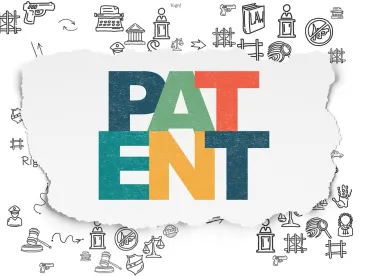On March 21, 2017, the United States Supreme Court issued a decision that significantly limits the applicability of the equitable defense of laches in patent cases. In SCA Hygiene Products Aktiebolag v. First Quality Baby Products, LLC, No. 15-927, slip op. (U.S. Mar. 21, 2017), the Supreme Court rejected the Federal Circuit’s en banc ruling that permitted laches to be asserted as a defense to a claim for damages incurred within the six-year period to which damages are limited under the Patent Act, 35 U.S.C. § 286.
This case began in 2010, when SCA sued First Quality for patent infringement after having sent First Quality a patent infringement notice letter in late 2003. No. 1:10CV-00122, 2013 U.S. Dist. LEXIS 98755, at *2-8 (W.D. Ky. July 15, 2013). In the district court, First Quality obtained summary judgment based on the defenses of laches and equitable estoppel. Id. at *37-38. On appeal, a Federal Circuit panel reversed the district court’s decision on equitable estoppel, but affirmed that laches barred SCA’s claims. 767 F.3d 1339, 1351 (Fed. Cir. 2014). The Federal Circuit then reheard the appeal en banc and ruled that laches can defeat a claim within the six-year damages limitation period set out in the Patent Act, reasoning that Congress, by enacting the Patent Act, had “codified a laches defense” that “barred recovery of legal remedies.” 807 F.3d 1311, 1323-29 (Fed. Cir. 2015). SCA then appealed to the Supreme Court.
In its opinion, the Supreme Court explained that laches is an equitable defense that was developed to protect defendants against unreasonable, prejudicial delay in commencing suit. SCA, No. 15-927, slip op. at 3 (quotations omitted). Section 286 of the Patent Act, however, recites:
Except as otherwise provided by law, no recovery shall be had for any infringement committed more than six years prior to the filing of the complaint or counterclaim for infringement in the action.
35 U.S.C. § 286. Relying heavily on its prior decision Petrella v. Metro-Goldwyn-Mayer, Inc., 134 S. Ct. 1962 (2014), in which it held that laches could not preclude a claim for damages incurred within the Copyright Act’s three-year limitations period, the Supreme Court in SCA inferred that § 286 “represents a judgment by Congress that a patentee may recover damages for any infringement committed within six years of the filing of the claim.” SCA, No. 15-927, slip op. at 6.
The Supreme Court determined that Petrella could not “reasonably be distinguished” from the instant case on the grounds that § 286 runs backward from the time of suit instead of forward from the date the cause of action accrued, as in the Copyright Act. Id. at 6. The Supreme Court further concluded that § 282(b)(1), which identifies “unenforceability” as a defense “in any action involving the validity or infringement of a patent,” did not create an exception to § 286. Id. at 8-15. The Supreme Court also rejected various policy arguments, emphasizing that its own policy views “cannot overrule Congress’s judgment” and noting that “the doctrine of equitable estoppel provides protection against... unscrupulous patentees inducing potential targets of infringement suits to invest in the production of arguably infringing products.” Id. at 16.
In contrast to laches, equitable estoppel requires more than just unreasonable delay and prejudice. As the Supreme Court explained in Petrella:
The test for estoppel is more exacting than the test for laches, and the two defenses are differently oriented. The gravamen of estoppel, a defense long recognized as available in actions at law, is misleading and consequent loss. Delay may be involved, but is not an element of the defense. For laches, timeliness is the essential element.
134 S. Ct. at 1977 (citations omitted). Companies need to be aware of this distinction and should consult their Michael Best attorney when contemplating sending or responding to patent notice letters or engaging in other pre-suit communications between a patent owner and a potentially accused infringer.





 />i
/>i
